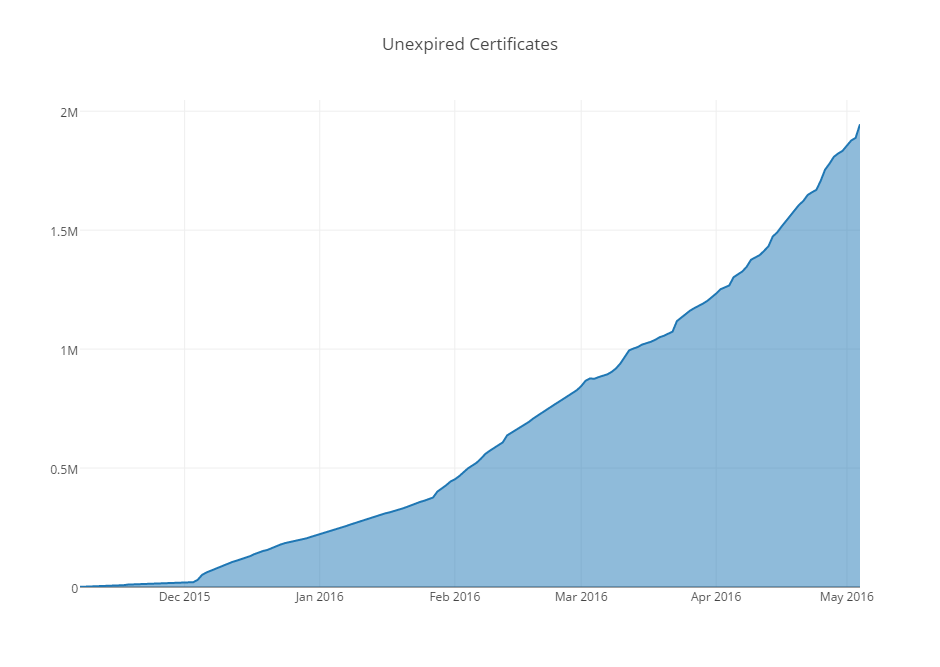Interesting look from Let’s Encrypt Executive Director Josh Aas on the explosion in certificates that the free service has seen since its launch in 2015,
At the start of 2016, Let’s Encrypt certificates had been available to the public for less than a month and we were supporting approximately 240,000 active (unexpired) certificates. That seemed like a lot at the time! Now we’re frequently issuing that many new certificates in a single day while supporting more than 20,000,000 active certificates in total. We’ve issued more than a million certificates in a single day a few times recently. We’re currently serving an average of 6,700 OCSP responses per second.
. . .
When 2016 started, our root certificate had not been accepted into any major root programs. Today we’ve been accepted into the Mozilla, Apple, and Google root programs. We’re close to announcing acceptance into another major root program. These are major steps towards being able to operate as an independent CA.


